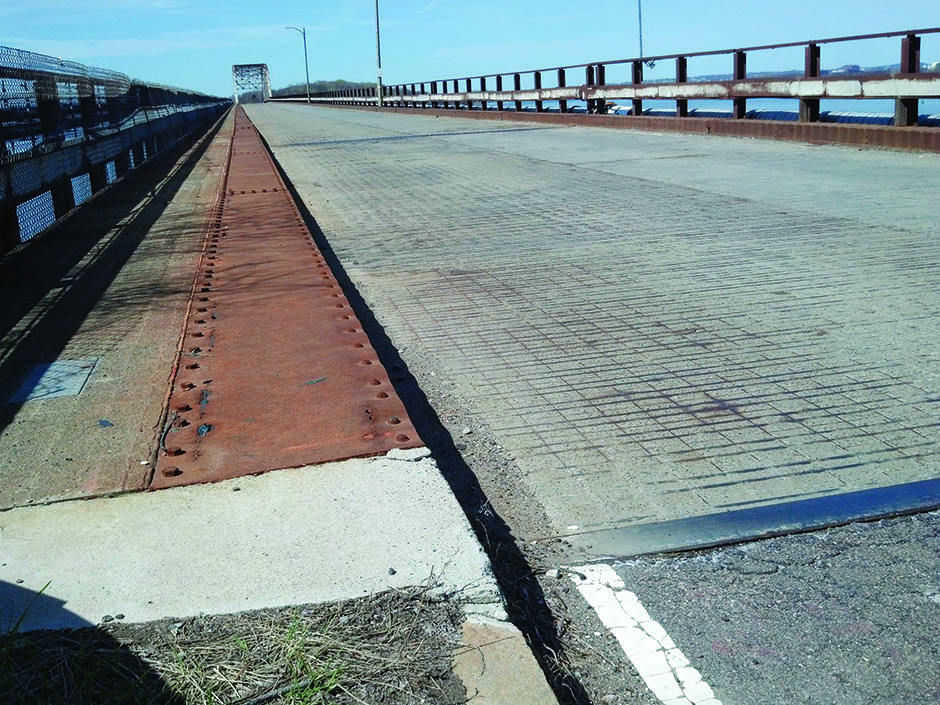Oct. 8: Long Island bridge closes after a private inspection. The city deems the bridge unsafe in the wake of new state requirements. Programs on the island—both health care workers and their clients—are given three hours notice. Buses on their way to the island’s shelter are turned around, bringing shelter guests to a new location. The island saw roughly 1,000 clients a day and had 700 beds for shelter guests and recovering addicts.
Oct. 10: South End Fitness Center opens, providing 250 cots and mats to men only.
Oct. 26: Boston Homeless Solidarity Committee holds its first meeting.
Nov. 12: The first community meeting to discuss Long Island relocation efforts is held at Blackstone Community Center. The auditorium is packed. Mayor Walsh, who had surgery for a kidney stone, doesn’t show up. Frontrunner location for a new shelter is on Frontage Road in the South End. Residential treatment centers mostly slated for locations in Roxbury and Mattapan.
Nov. 20: First meeting of an interfaith coalition called Boston Religious Leaders for Long Island Refugees. This coalition will later establish (and be better known as) Boston Warm.
Nov. 24: Boston Warm leaders hand-deliver a letter to the mayor urging action but get no response.
Nov. 25: Boston Warm leaders hold a prayer service for Long Island refugees.
Dec. 2: Community meeting held in Mattapan on relocating Wyman Reentry and transitional housing. Only a handful of Mattapan residents show up, having heard about the meeting last minute. Those in attendance are upset at the lack of communication. Majority seem opposed to putting a treatment center and reentry program in Mattapan, and even those who support it wish they had more notice.
Dec. 4: Community meeting in Roxbury. Many more people than Mattapan but similar complaint—the feeling like these communities are being used as “dumping grounds” for the city’s problems.
Dec. 10: City decides not to relocate 200 treatment beds to Roxbury’s radius hospital.
Dec. 12: US Conference of Mayors nationwide study reveals Boston has the highest number of residents in emergency shelters of any major city.
Dec. 13: Frontage Rd. abandoned as frontrunner. City continues search.
Dec. 15: Old transportation building on Southampton Street named as new shelter location. Will require a lot of work to be fully functional, but city says, upon completion, it will host 400 beds.
Jan. 6: Demolition of Long Island bridge begins.
Jan. 13: Southampton shelter officially opens after phase one is complete. While not completely finished (only the second floor was prepared), the shelter offers 100 beds.
Jan. 19: Boston Warm opens at Old South Church.
Jan. 23: Boston 2024 Olympic Bid documents reveal Long Island is slated to be used for shooting events.
Jan. 26: Boston Warm opens second site at Emmanuel Church.
Jan. 27: At first public meeting on Boston 2024, Mayor Walsh addresses concerns about the treatment of homeless people during potential Olympics preparation and vows to “never sweep Boston of its homeless.”
Mar. 28: The city announces it will miss its April deadline, delaying construction on Southampton due to asbestos. The city was supposed to open another 300 beds by the start of April.
Apr. 8: BHSC members hold a march and rally marking the six-month anniversary of the closing. The members walk into City Hall and manage to snag an impromptu meeting with Felix Arroyo and other city officials.
Apr. 13: City opens a 75-bed residential facility in Mattapan. Forty-five of those beds are for transitional clients, and 30 are for Wyman Reentry clients.
Jun. 25: Expanded Southampton Shelter officially opens, with beds for over 400 clients and space for Safe Harbor clients and others in recovery. Other renovations still needed—like a new kitchen, for example.
